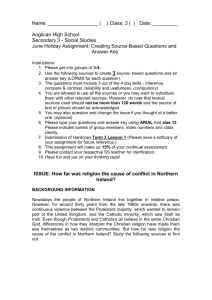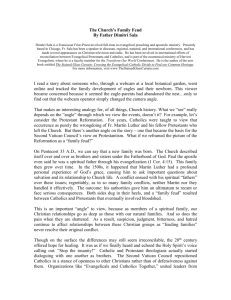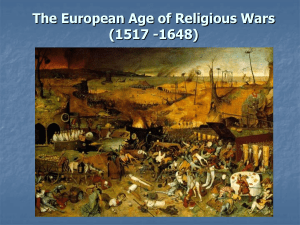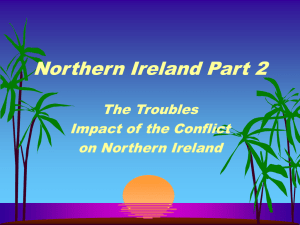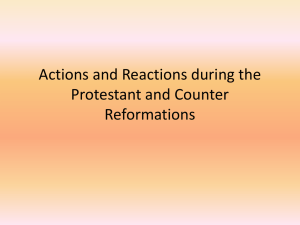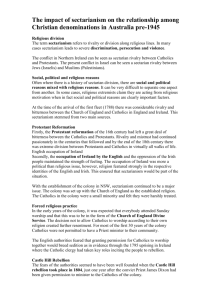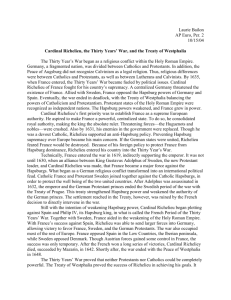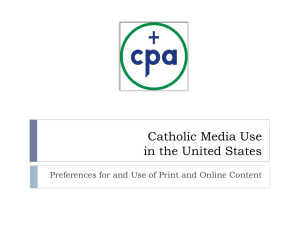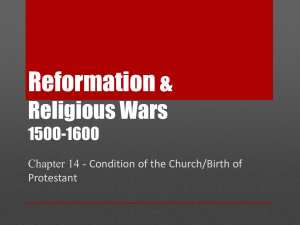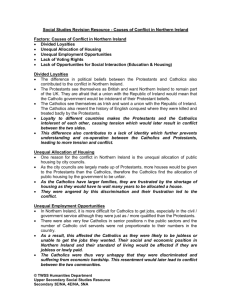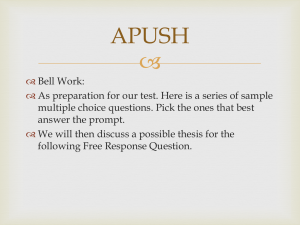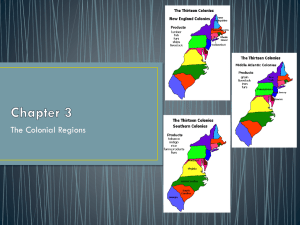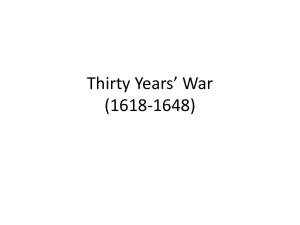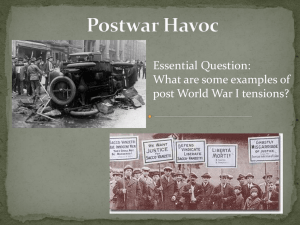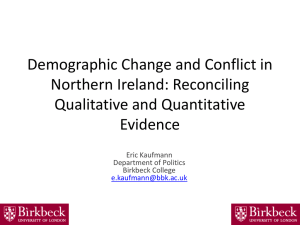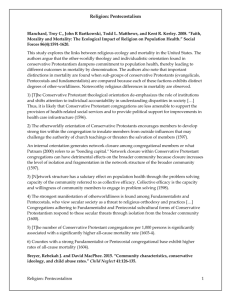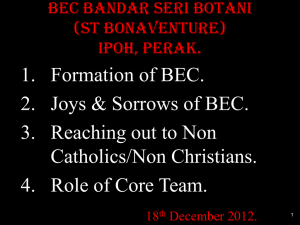Northern Ireland
advertisement
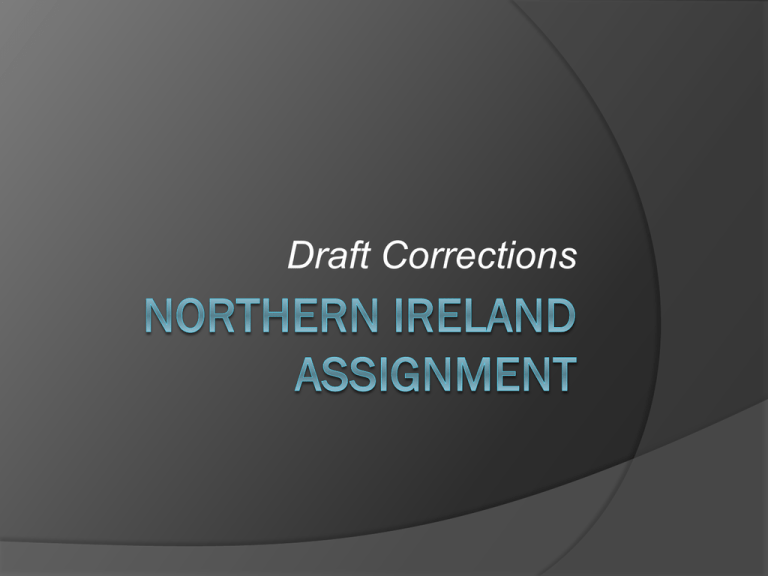
Draft Corrections Factor 1: Divided Loyalties The difference in political beliefs between the Protestants and Catholics also contributed to the conflict in Northern Ireland. The Protestants see themselves as British and want Northern Ireland to remain part of the UK. They are afraid that a union with the Republic of Ireland would mean that the Catholic government would be intolerant of their Protestant beliefs. The Catholics see themselves as Irish and want a union with the Republic of Ireland. The Catholics also resent the history of English conquest where they were killed and treated badly by the Protestants. Explanation 1: Divided Loyalties Loyalty to different countries makes the Protestants and the Catholics intolerant of each other, causing tension which would later result in conflict between the two sides. This difference also contributes to a lack of identity which further prevents understanding and co-operation between the Catholics and Protestants, leading to more tension and conflict. Factor 2: Lack of Voting Rights A lack of voting rights contributed to the conflict between the Protestants and the Catholics. Before 1969, only those who owned houses and businesses were entitled to vote in the local government elections. Each household was given 2 votes while companies were given more votes depending on the number of workers they had. As the Protestants were richer, they had many companies and therefore got more votes. Voting districts were also drawn up to include a larger proportion of Protestants Explanation 2: Voting Rights Poorer Catholics who did not own companies got less votes, which resulted in them being unable to obtain any say in the government or gain political power, making them resentful of the Protestants and their ability to gain advantage through voting rights. Secondly, by re-drawing the voting districts, Protestants could ensure that the Catholics were unable to gain a power base, further marginalising them. The Catholics were angry with this, causing tension which later led to conflicts between the Protestants and the Catholics. Factor 3: Lack of Opportunities for Social Interaction Another cause of conflict was the lack of opportunities for social interaction between Catholics and Protestants. One area was in the education system. Protestant children attended fully-funded public schools where they were taught British history, played British sports and were loyal to Britain. On the other hand, Catholic children attended partially-funded private schools where they were taught Irish history, played Irish sports and regarded Britain as a foreign country. Only a small group of children attended integrated schools where both groups interacted with each other. In addition, the Catholics and Protestants have always lived in separate residential areas which reduces the opportunity to socially interact. Explanation 3: Lack of Opportunities for Social Interaction Due to a lack of interaction, the Protestants and the Catholics are unable to resolve their differences. Attending different schools and learning different things and not interacting together makes generations of Protestant and Catholic children grow up distrusting and being hostile to each other, causing tension and conflict. Weighing Which is the most important cause? Remember, LACK OF COMMON IDENTITY FURTHER PREVENTS UNDERSTANDING AND CO-OPERATION BETWEEN THE TWO GROUPS Divided Loyalties Voting Rights Lack of Social Interaction Causes conflict because both sides are loyal to different countries Causes conflict because Catholics lack fair voting rights. Different education systems and residential areas prevent social interaction This is a direct cause of the conflict. Since 1969, this issue has been resolved. This prevents any chance of resolving any issues or causes of conflict
